After a loud Tour launch in May and a PGA Tour win, Titleist is ready to pull the curtain back on its fourth-generation T-Series lineup.
As teased during Tour seeding, three of the four models (T100, T150 and T350) are all returning to the lineup, while the new T250 replaces the T200 model as the players’ distance option in the family. But Titleist also is introducing a new model, the T250 Launch Spec, for players who need the speed of the T250 but more loft to get the ball airborne.
“Taking all that feedback, there really were three clear design objectives for this next generation of T-Series,” said Marni Ines, Titleist’s director of iron development. “We wanted to increase our long iron launch, tighten our mid- and short-iron spin consistency and improve overall carry distance consistency throughout the bag. Irons are made to hit very specific distances within a specific flight window, and so we’re always trying to make that more repeatable for every iron in your bag.”
Several PGA Tour pros have already switched into the new T-Series irons, including Aldrich Potgieter, who earned the first worldwide win for the line at the Rocket Classic a couple of weeks ago. Titleist irons have been No. 1 on the PGA Tour for 11 straight seasons and counting.
Keep reading for seven things you need to know about the new T-Series lineup as well as my thoughts on the line.
In addition to the new T-Series irons, Titleist has also launched new T-Series Utility irons and you can read about them here.
Titleist possibly has the most comprehensive iron fitting in the game because not only do they fit you for a 7-iron, but they also fit you for a 5-iron and longer irons if applicable.
The argument is that if you can hit a 7-iron with one setup, you can hit the 9-iron, but not necessarily the 5-iron. Titleist fits your irons to optimize the “3 Ds”: Distance Control — ensuring consistent 5 mph ball speed gaps between clubs; Dispersion Control — tightening your shot accuracy; and Descent Angle — delivering consistent trajectories to help shots hold firm greens. This philosophy explains why 80 percent of Titleist Tour players use at least models in their iron set.
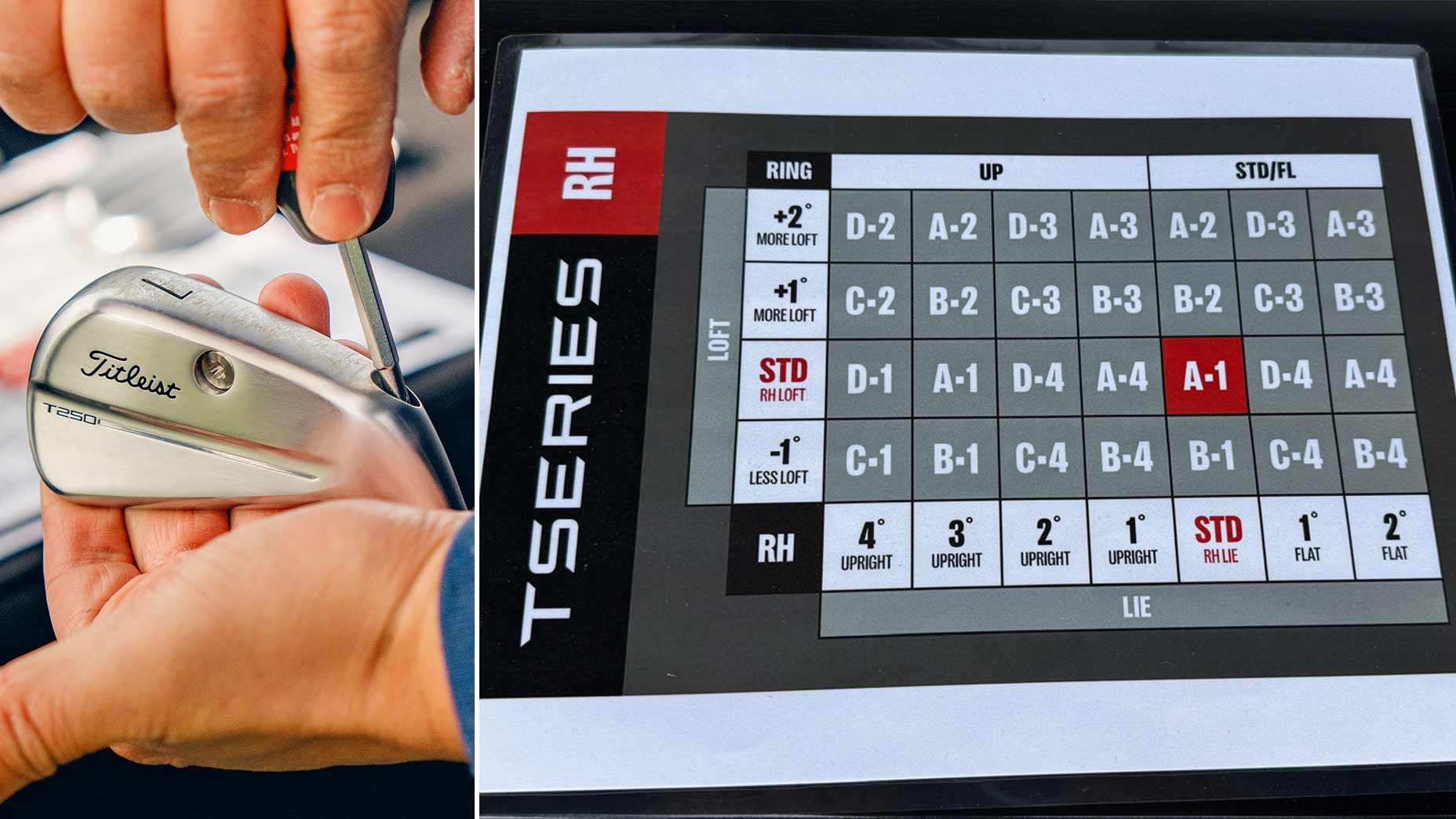
With the new T-Series platform, it’s easier than ever, thanks to the new SureFit fitting heads. SureFit might sound familiar as it’s what Titleist calls their adjustable hosel for metalwoods, and now it’s been adapted to their fitting for iron heads, working similarly with two rotating cogs.
With the SureFit irons, fitters can now take the same shaft and head combination between 2 degrees flat and 4 degrees upright or 1 degree strong and 2 degrees weak — in seconds. They also have an adjustable weight to remove 6 grams of weight for players who need it, either due to a longer shaft length or preferring a lighter swingweight. In total, there are 28 possible loft/lie combinations without having to bend anything or switch heads.
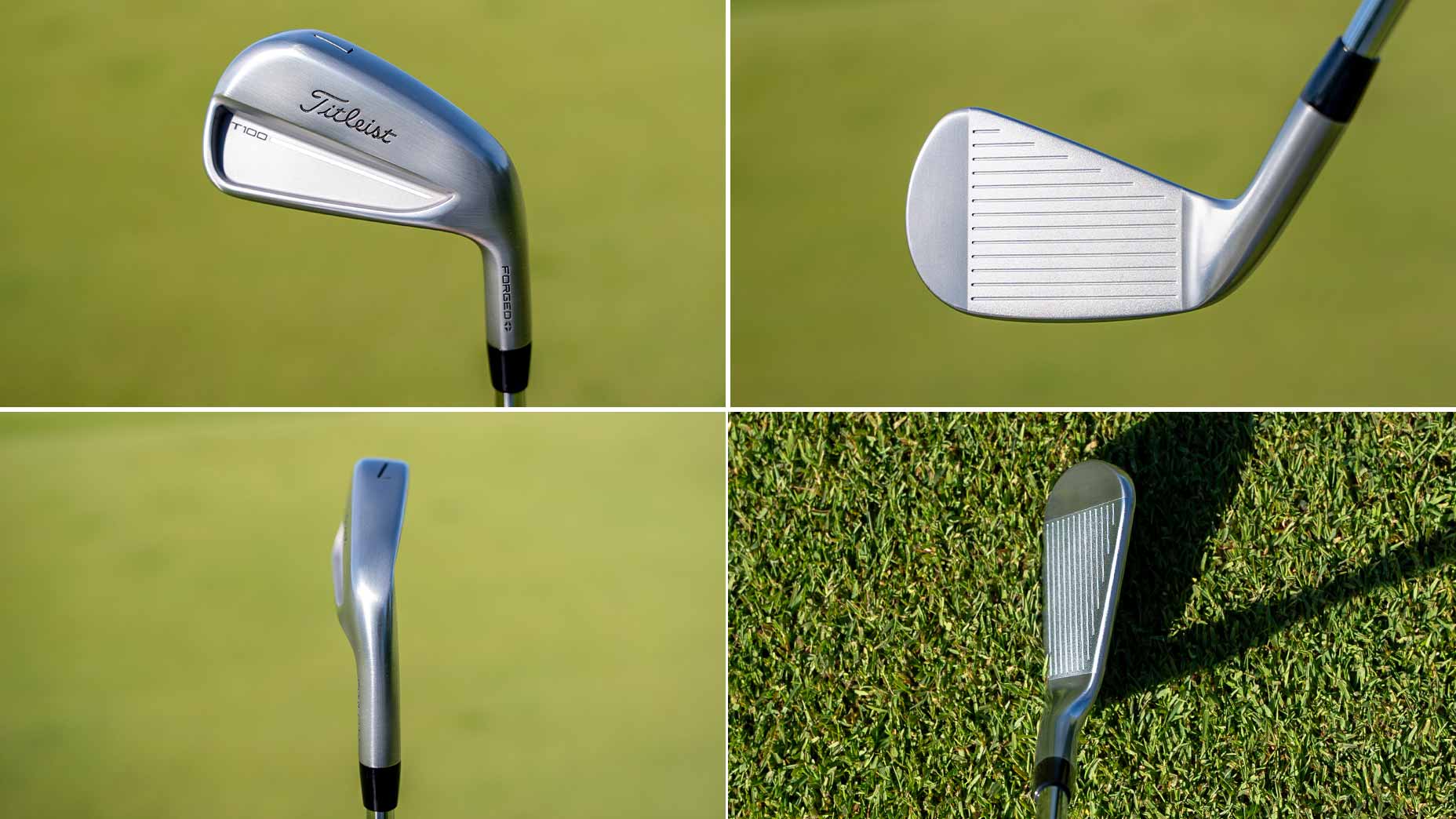
Having adjustable fitting heads is going to be key because Titleist made the new T100 irons 1 degree stronger lofted across the set from each of the previous three generations.
This is far from a case of “loft-jacking,” though. The change to the standard spec was made because feedback from the PGA Tour was that the T100 irons needed more bounce. On the LPGA Tour, Titleist saw many players preferring the more compact T100 (and previous generation T100S), but needed to bend them closer to the T150 lofts to achieve desired carry distances.
With T100 starting a degree stronger, players can now weaken them to the previous standard spec or more to get more bounce or leave lofts as is, or even strengthen them to get extra ball speed. For my set, my fitter, Louis, actually fit me into 2-degree weaker lofts for my 6-PW in the T100 and T150 5-iron. For me, the weaker lofts helped me add spin and gain ball speed consistency, and a lot of that can be owed to turf interaction.
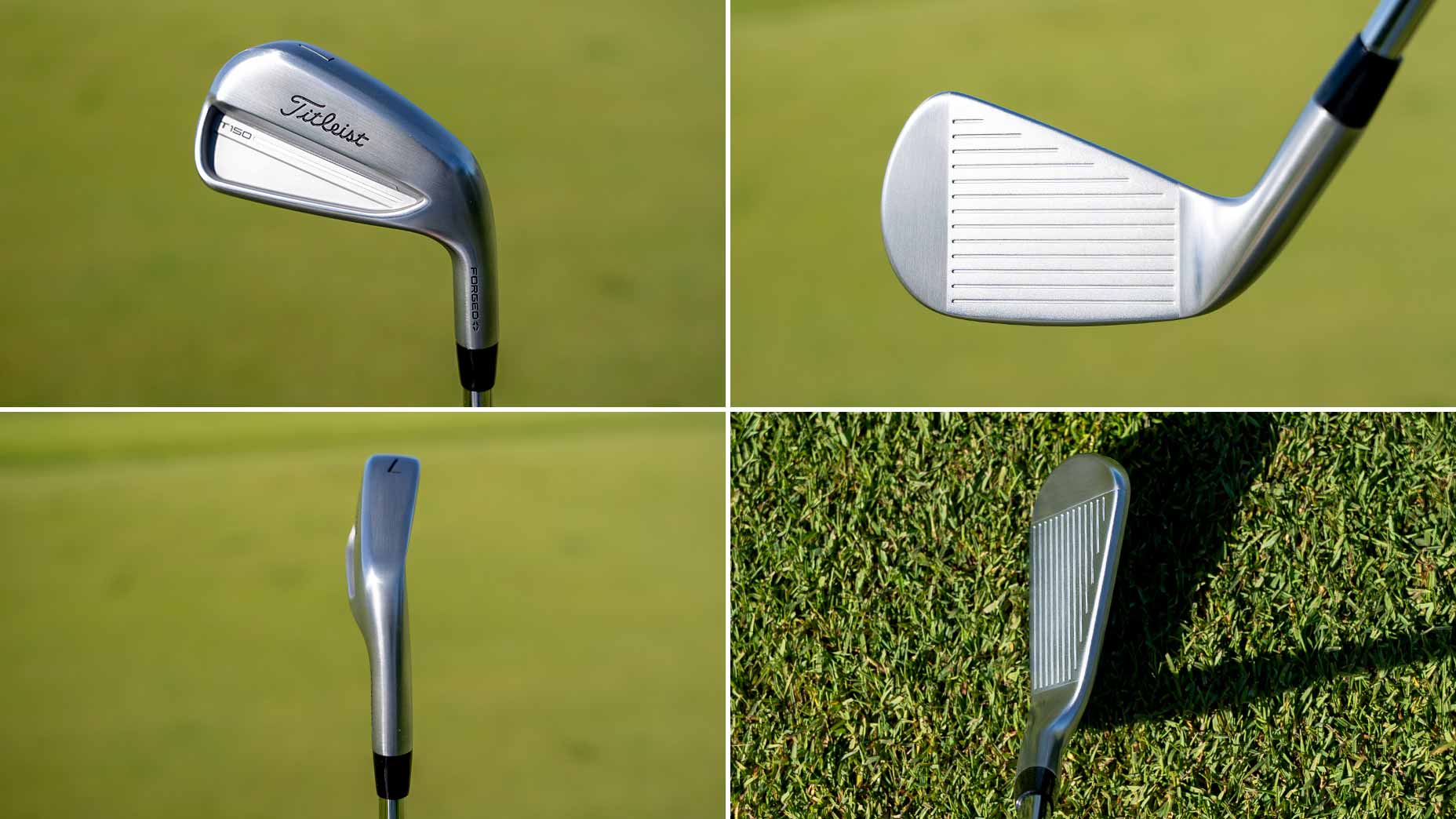
Compared to the previous generation, the look of T100 and T150 hasn’t changed much, but the real advancements are concealed in the body of the iron.
Once again, Titleist is using high-density tungsten weighting low in the head split across the heel and toe to add stability, but there is 5-20 percent more in each iron across the models to maximize inertia.
With the aim of the new T-Series to help players launch it higher, a new muscle channel sits in between the tungsten weights in the 3- and 4-irons of the T100 and the 3- through 7-irons in the T150.
Both the T100 and T150 3-7-irons feature a new variable face technology to combine with the improved muscle channel to produce faster ball speed and help with proper gapping in the long- and mid-irons.
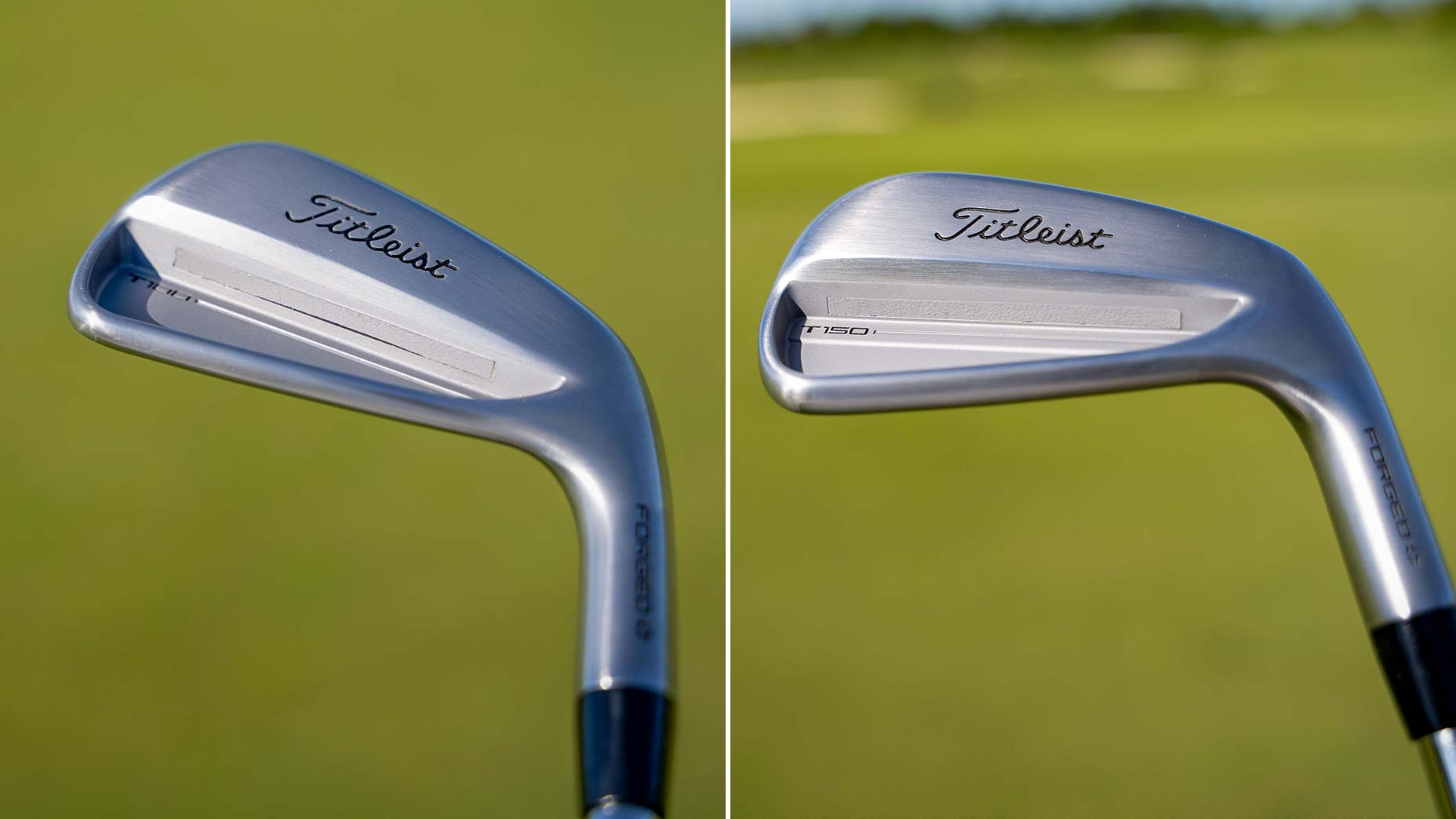
Additionally, the blade length of T150 was increased by one millimeter. Initially, when T150 was created in the prior generation, only the topline and sole were thickened from T100.
“That didn’t take into account the overall proportion of the head,” Ines said. “So now by adding this millimeter to the head, I think it’s more proportional to the original shape.”
Titleist makes most of its R&D decisions based on Tour feedback and one of the things requested by DP World Tour players was additional spin out of the rough and wet conditions. The initial thought was to try the same grooves in Vokey wedges in the T100, but they found that that wasn’t necessarily a good thing for long irons and they actually spun too much.
For the new T-Series, the mid- and short-irons use a new progressive, steeper-walled U-groove to help performance out of the rough. In the T100, the new groove is used in the 7-PW while other sets use it in shorter irons, depending on loft.
In a test with my gamer 7-iron versus the new T100 7-iron, my gamer averaged around 3,800 RPM of spin in both dry and wet rough, while the new T100 saw an average of 5,500 RPM out of dry rough and 5,100 RPM in wet. That’s an improvement of 1,400 RPM of spin retention in wet rough and 1,700 RPM in dry rough.
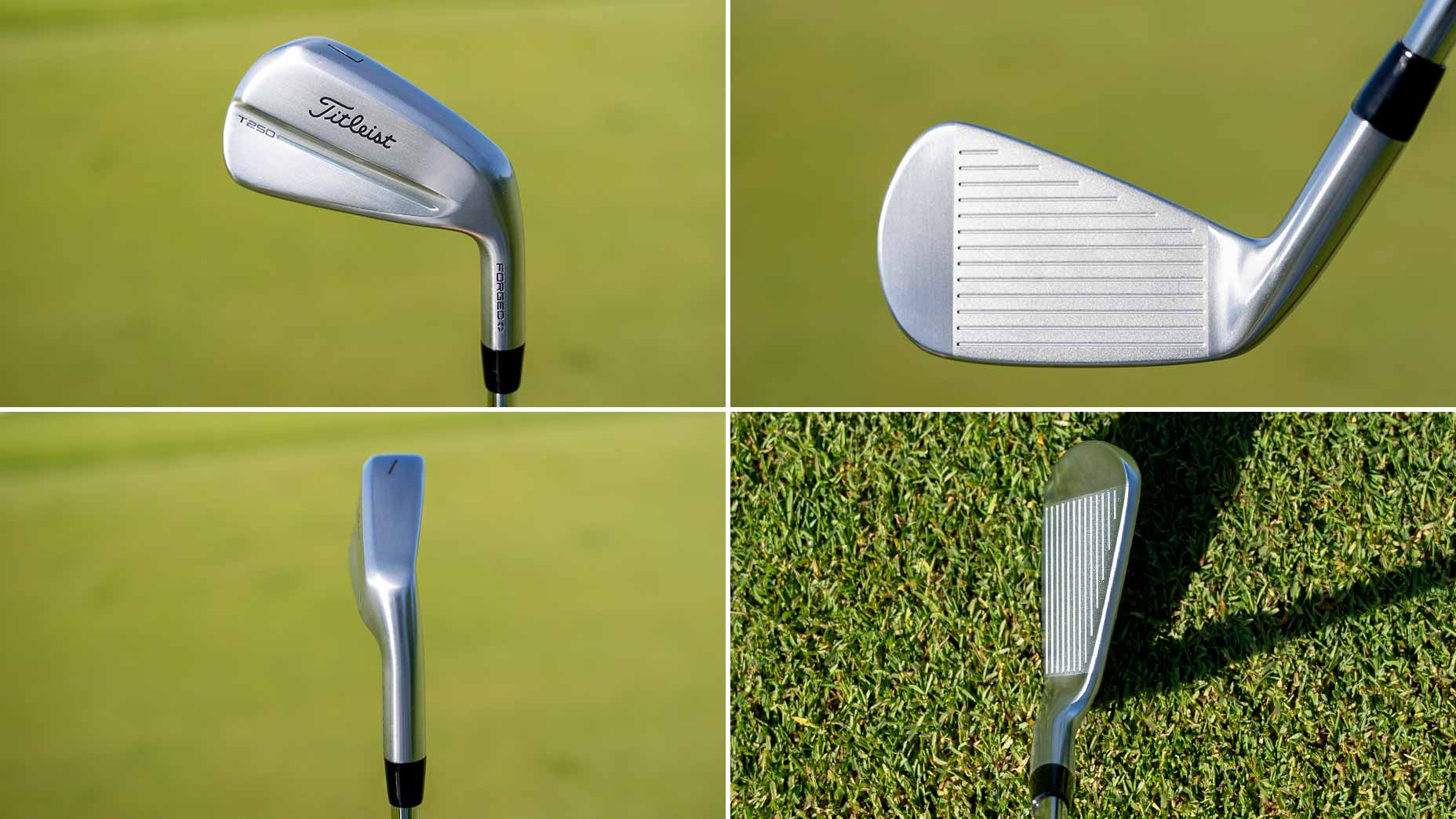
The most radical cosmetic changes are reserved for the new T250 and T350, which now feature a new all-steel construction as opposed to the plastic badging that concealed the backs of the previous generation. The new look now matches the rest of the line, making it easier to blend sets.
The T250 has been completely redesigned, resulting in the name change and a slightly larger profile — 1.5 mm longer blade length — but not one that will put off any previous T200 users.
Both irons feature new variable thickness face designs with the T250 having an V-taper design while T350 has a multizone taper L face. With the CG moved lower to help with launch, the face designs help retain ball speed on lower strikes.
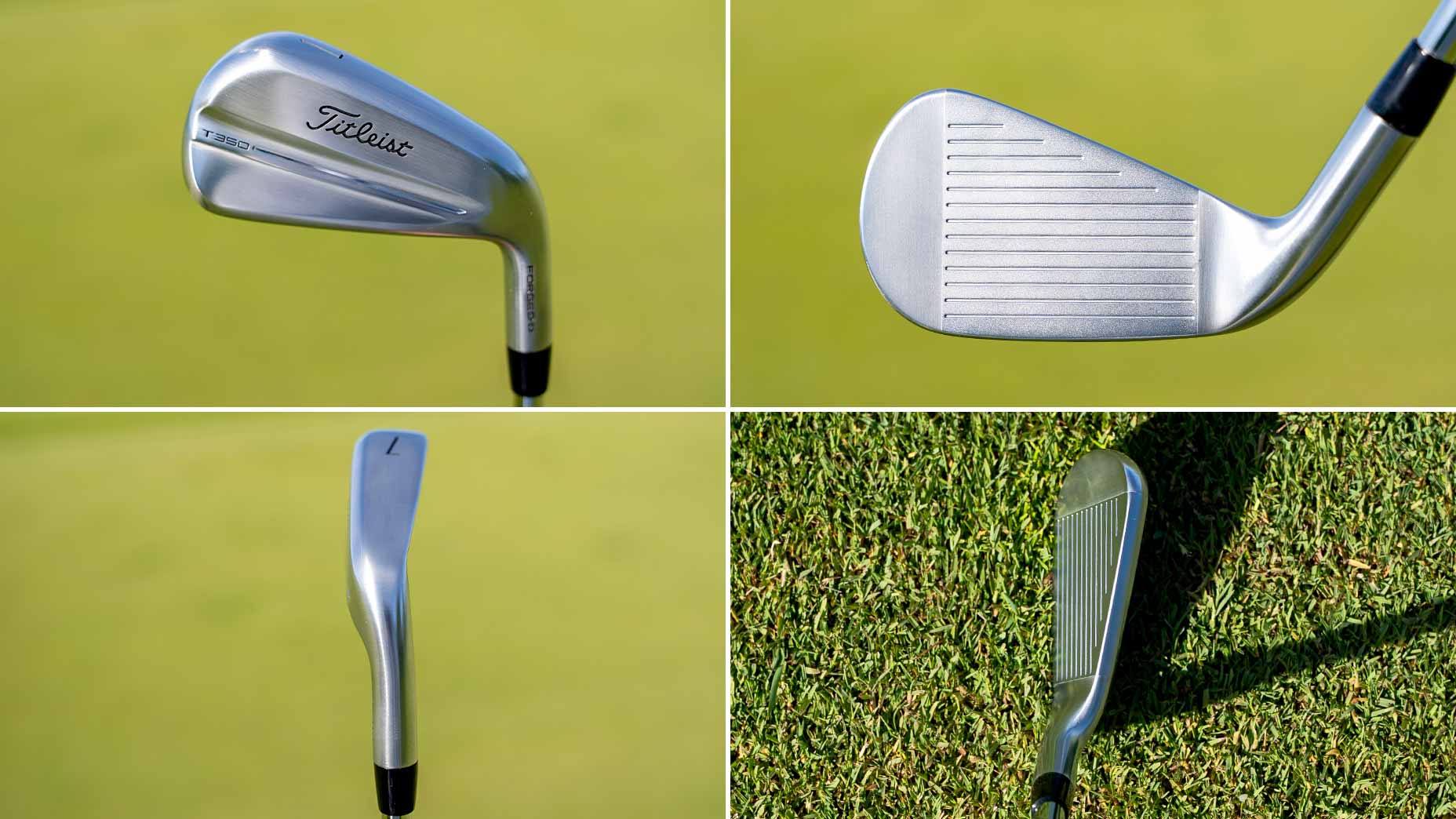
The key technological advancement in the new T250 and T350 is the addition of a new Max Impact core.
With the Max Impact Core, Titleist’s aim was to increase ball speed retention across the face. Using the example of the face being a trampoline, Titleist tried to figure out how they could drop a ball on different parts of the trampoline and have it bounce the same height.
After testing different materials to try and tune the face properly, they found that a urethane polymer, similar to the material in a golf ball, underneath the face allowed it to have the same spring-like effect in the center and off-center.
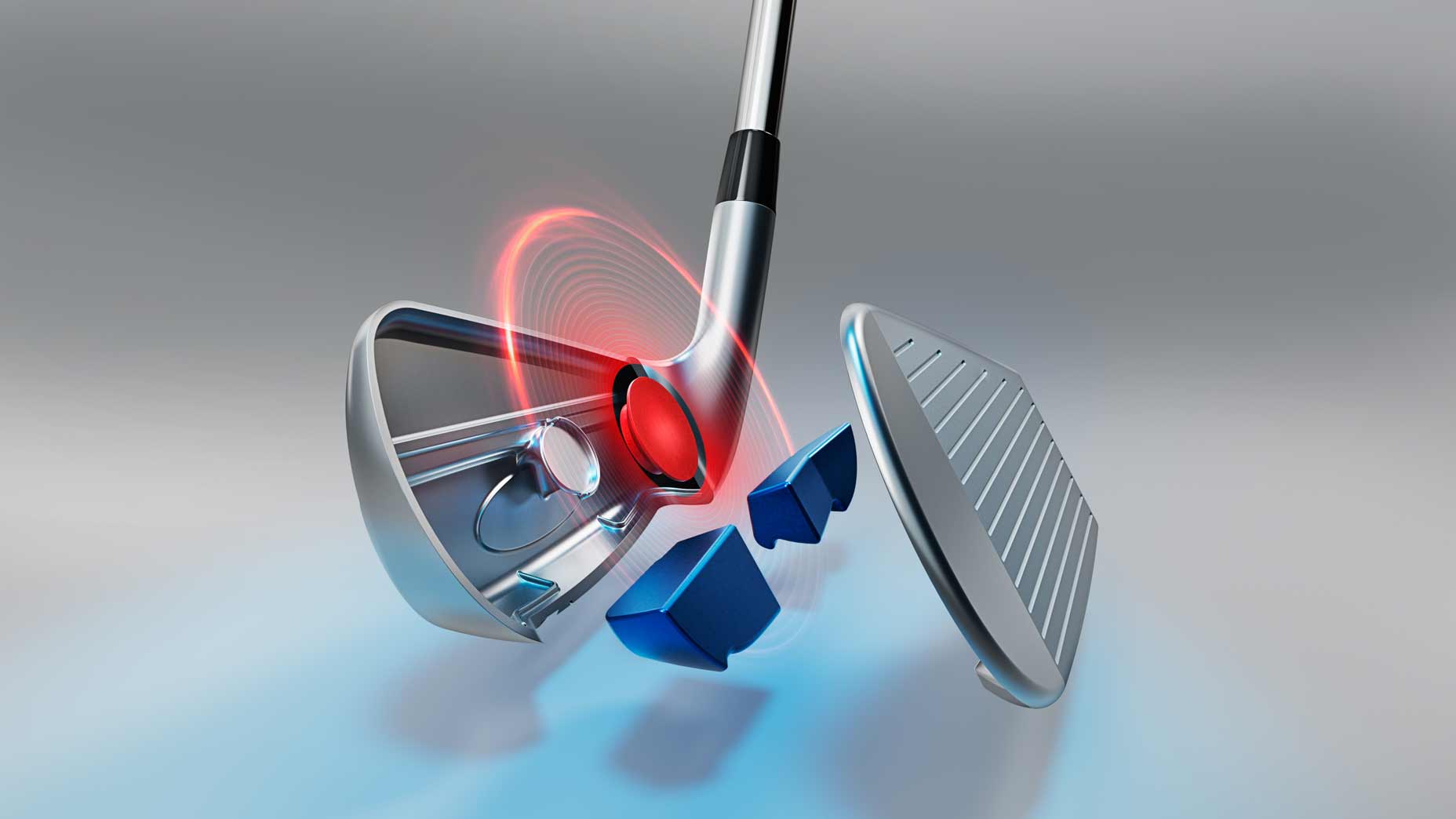
With the newest release of the T-Series also comes a new fifth model to the lineup.
The T250 Launch Spec is the same construction as the T250, but offers a 6-gram lighter headweight and 4-4.5 degree weaker lofts across the set with four-degree gaps off a 35-degree 7-iron, matching the 620 CB and MB irons.
“We saw there was opportunity in our lineup to fit the needs of the golfer who is maybe a moderate swing speed player that really needs launch and can’t achieve the 3 D’s without more help,” Ines said.
A player could also take advantage of the T250’s speed, but in a more traditional loft package by going with the T250 Launch Spec. With custom options of plus or minus 2 degrees remaining, a player could now be fit into the T250 shape with a 7-iron loft anywhere between 28.5 and 37 degrees.
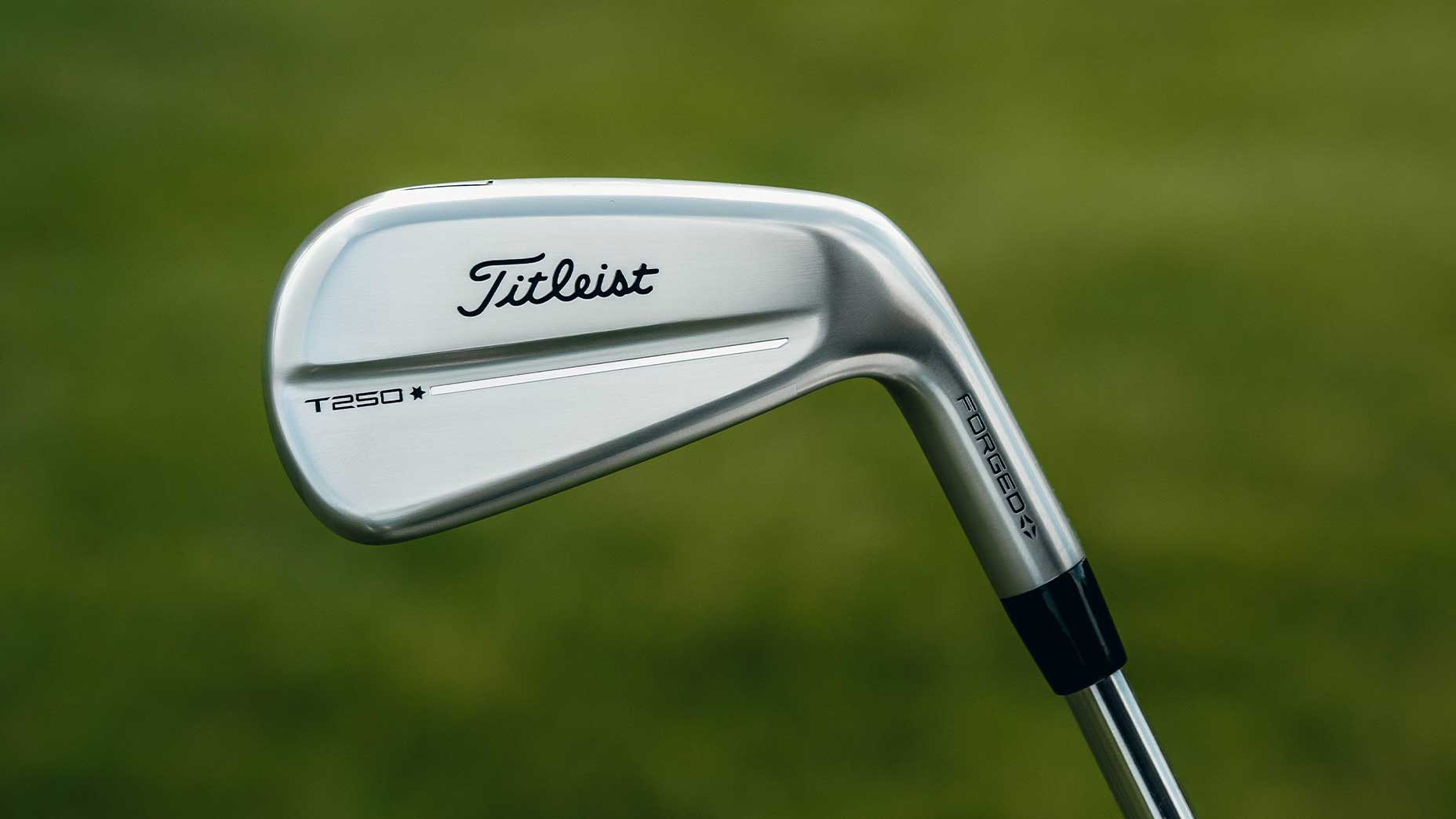
In my first year of working the gear beat, the new Titleist T-Series irons (a combo of T100 6-9, T150 5-iron and T250 4-iron) was the first set of irons that knocked my previous gamers out of the bag — and from a brand I’ve played my entire adult life.
For that reason, I feel pretty passionate about this new line.
Louis fit me into that above set at 2 degrees weak of standard and 2 degrees flat. Before I had been even flatter, but we found my turf interaction was better and I didn’t have a jumpy left miss. With the weaker lofts, even after a couple bad swings to start, I found that I actually covered the ball better and launched the ball lower and my ball speed consistency dramatically improved.
When you hear the phrase “Tour iron” describe the T100, you fear that it might not be as forgiving, but that is far from the case. Even after my fitting, in all my testing, I was shocked at how easy it was to hit my ball speed numbers with T100 despite the weaker lofts.
The improvements to T150 and T250 also cannot be ignored, as I did by skipping T150 in my previous T-Series fitting. Now, with the improved shape, the T150 5-iron in my set bridges the gap to a T250 4-iron seamlessly.
The aesthetic changes to T250 and T350 also punctuate them as highlights of the new set rather than afterthoughts.
Which brings me to a final point. Over the years, Titleist has a history of being a brand only for better players, but with the new T250, T250 Launch Spec and T350, it’s making a serious statement that it can compete with the other leading manufacturers for supremacy in the overall irons market.
T250 Launch spec specifically is going to be a game-changer that many better players may even find beneficial to their game. My fitter, Louis, even told me he planned to game them because of the ease of launch.
There’s a reason so many Tour pros use Titleist irons and with this latest release, don’t be surprised if you see more flock to the newest T-Series after the offseason.
View Product
View Product
View Product
View Product
Titleist’s new 2025 T-Series irons are available for fittings and pre-orders starting Thursday, July 10 and will arrive at retail locations on Thursday, August 21.
Each model will cost $215 per club and a seven-piece set will cost $1,499 for steel shafts and $1,599 for graphite. Each iron model has its own featured stock shaft option, but a wide range of options is available through custom order.
Stock lofts are as follows, but can be adjusted two degrees each way through custom:
T100: (3i) 20, 23, 26, 29, (7i) 33, 37, 41, (P) 45, (W) 49
T150: (3i) 19, 22, 25, 28, (7i) 32, 36, 40, (P) 44, (W) 48
T250: (2i) 18, 20, 22, 24, 27, (7i) 30.5, 34.5, 38.5, (P) 43, (W) 48
T250 Launch Spec: (5i) 27, 31, (7i) 35, 39, 43, (P) 47, (W) 52
T350: (4i) 20, 23, 26, (7i) 29, 33, 38, (P) 43, (W48) 48, (W53) 53
Want to find the best irons for your bag in 2025? Find a club-fitting location near you at True Spec Golf
The post Titleist 2025 T-Series irons | 7 things to know appeared first on Golf.